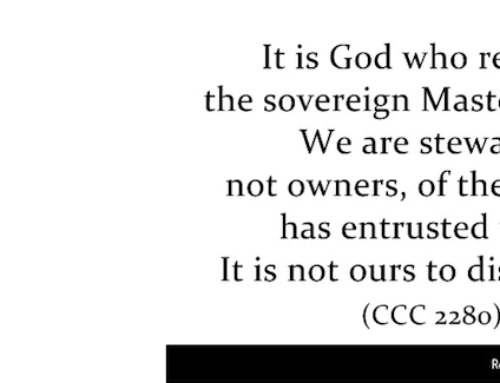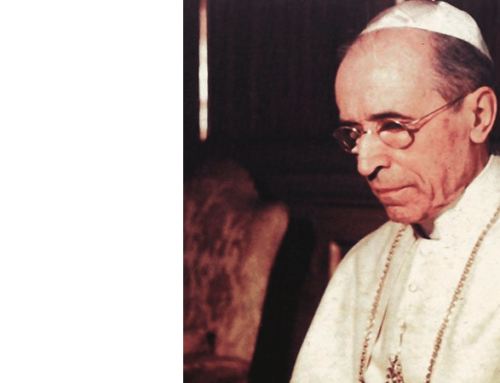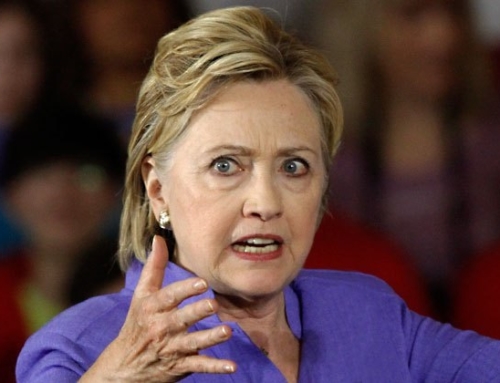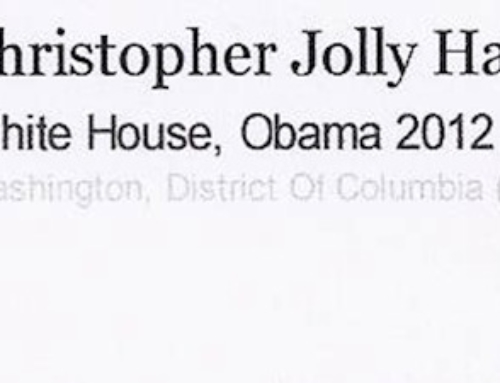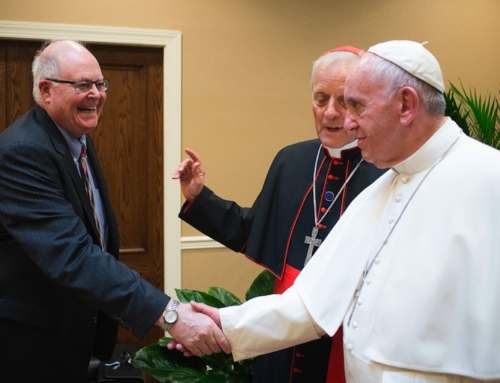by Evan Gahr
(Catalyst 12/1997)
Whether it’s news shows that ignore religion or entertainment programs that regularly depict clergymen as buffoons, hypocrites, or outright perverts, television remains ground zero for the culture of disbelief.
Rabbi Marc Gellman, one of the first clergymen to appear regularly on network television in some 40 years, says that “there’s an anti-religious perspective in the media. News has created life without religion. That has created a distorted version of the world.” Adding insult to injury, he contends, are the entertainment programs that offer “demeaning and libelous” portrayals of clergymen. Crazed rabbis betray confidences, priests are pedophiles, others are just plain simpletons. Few men of the cloth receive much sympathy unless they’re outright heretics or rabble-rousers.
Television executives wouldn’t dare depict representatives of other groups in such a manner, lest they be charged with “insensitivity” and other cardinal liberal sins. But there’s a special absolution for such transgressions if you mock religious folks. Despite improvements on both the news and entertainment side, the general picture remains bleak. For all their purported marketing savvy and sophistication, most television executives seem oblivious to many viewers’ craving for programs that give religious devotion serious, fair-minded treatment.
According to TV Guide, 61 percent of television viewers polled want “references to God, churchgoing, and other religious observances in prime time.” Although 90 percent of Americans believe in God and more than 50 percent attend church or synagogue regularly, religion is accorded relatively scant attention. Television executives invariably justify the sewage they dump on the cultural landscape—such as Murphy Brown’s ode to Fatherless America—by claiming that these shows merely reflect social realities. Yet television consistently overlooks the centrality of religion in American life. So much for sociological accuracy.
A recent study by the Media Research Center reveals the skewed portrait of religion that television offers. Last year, there were 436 religious depictions—everything from one-liners to thematic treatments—in 1800 prime-time hours on the broadcast networks (ABC, CBS, FOX, NBC, UPN, and WB). “Religion is a scarce commodity on prime-time TV, appearing about once every four hours. Even though depictions of religion [were] overall positive, prime time has too often presented distorted unfair views of both clergy and laity.”
Television also seems fixated on religious-minded criminals: “Law and Order” featured a whole slew of religious psychos, including a crazed theology student who killed three persons while laboring under the impression that he was a biblical warrior. TV movies such as NBC’s “Justice for Annie”—in which a middle-aged couple kills a young woman for financial gain—offer similar fare. It’s a safe bet that religious people are disproportionately represented among television’s criminals.
Again, other groups would never receive such unflattering treatment. Indeed, “reality-based” television shows sometimes take “creative liberties” to insure that their fictional miscreants aren’t top heavy with minorities. Yet while religious criminals are over-represented on TV, religious do-gooders are few and far between. James Martin, who writes on television for the liberal Catholic weekly America, notes that “ER” presents a wide array of representatives from the “helping professions”—everyone from teachers to Girl Scout leaders. But the only hospital chaplain he recalls is a nun who appeared in full habit, which most sisters haven’t worn for years.
Still, “ER” is par for the course. For example, the recently defunct series “Picket Fences” prominently featured a local parish priest consumed by a foot fetish, as well as a shyster lawyer considered by many an anti-Semitic stereotype. To be fair, “Picket Fences” won kudos for many positive religious portrayals. And executive producer David Kelley has treated criticism with considerable seriousness, rather than hiding behind supposed “sociological accuracy.” But television’s grotesque caricatures aren’t merely “insensitive”; they mock religious folks in a manner that network censors would red-flag if directed at anyone else. Says Rabbi Gellman, “the last acceptable prejudice in America is prejudice against religious people.”
No wonder television news ignores them. In a study released this March, Brent Bozell’s Media Research Center (MRC) determined that only 268 of approximately 1,800 nightly news stories broadcast by ABC, CBS, CNN, NBC, and PBS last year concerned religion. The morning programs were even more dismal. Though the entertainment division showed some improvement since 1993, the figures for news broadcasts are roughly commensurate with past MRC studies. And last year, the MRC noted, reporters overlooked a number of newsworthy religious stories—such as the overseas persecution of Christians.
Meanwhile, normally astute journalists continue to ignore religious angles. When heavyweight champion Evander Holyfield was interviewed live after Mike Tyson lost their June fight on account of biting, Holyfield repeatedly praised Jesus—and suggested that his faith helped keep him calm when Tyson turned his ear into an appetizer. But the subsequent—and otherwise exhaustive—news coverage virtually ignored Holyfield’s religious pronouncements.
Still, not all is bleak. ABC News in particular shows signs of improvement. Peter Jennings overcame the strenuous objections of jittery colleagues to help Peggy Wehmeyer become the first network news religion correspondent in 1994. But other networks have failed to follow suit, even though producers strain to ensure representation of women and racial and ethnic minorities among reporters and on-air guests. “I find it hard to accept,” says Wehmeyer, “that the major networks do not consider religion worthy enough to assign more people to this beat.”
Wehmeyer, who has covered everything from Christian capitalists to a spiritual revival among Jews, stressed her gratitude to ABC and Peter Jennings for their commitment to religious news coverage—a commitment underscored when ABC signed her for another three-year contract this spring.
Despite her sound instincts and long experience, Wehmeyer is an oddity to some in the news business. Many people “assume I can’t be objective because I’m a Christian.” No wonder this self-described “moderate evangelical,” who didn’t learn until college that her mother is Jewish, is reluctant to discuss her own faith. She’s not the only one. In a half-hour telephone interview, former NBC correspondent Bob Abernethy, who hosts this fall’s PBS-distributed show, “Perspectives: The Newsweekly of Religion and Ethics,” gladly talked at length about the program. But he was hesitant to discuss his own religious background as the grandson of a Baptist minister and current member of the United Church of Christ,
Most newsmen and commentators routinely insert details about themselves into their stories. But religion still gives the powers-that-be the willies. Rabbi Gellman, who along with Monsignor Thomas Hartman constitutes “Good Morning America’s” “God Squad,” notes that “several people at ABC went way out on a limb” to bring the duo on the air. The resistance is rather bizarre. After all, clergymen have a proven track record. The Emmy award-winning Bishop Fulton J. Sheen proved a smash commercial success in the 1950s with his show, “Life Is Worth Living.”
In their two years on the air, Gellman and Hartman have discussed all kinds of news stories, some with obvious religious dimensions, others not. (After Mickey Mantle died, they considered what lessons even imperfect biblical heroes can teach us.) Gellman has appeared in a giant pumpkin head on Halloween to show folks that clergymen aren’t ogres. But the God Squad have their work cut out for them.
Just ask Martha Williamson, the born-again Christian who had to fight tooth and nail to get her show “Touched by an Angel” on the air. A well-informed TV producer tells tae that CBS’s head of programming hated the show and bent over backwards to sink it. Even after its test-marketing proved impressive, he tried to bury the program in an awful time slot. Panned by critics and shunned by CBS, the show nevertheless soon achieved immense popularity. (At that point, the hostile network executive decided to take credit for birthing the show.) With some 20 million viewers weekly, “Touched by an Angel” ranks among television’s top three rated programs—and now has the coveted Sunday night time slot. CBS even has a spin-off, “Promised Land,” which Williamson also produces.
Other networks, of course, have followed suit, but still seem rather clueless. ABC’s fall line-up, for example, includes “Teen Angel” (Thomas Aquinas he ain’t) and “Nothing Sacred.” The latter, puffs ABC’s promotional material, concerns an iconoclastic priest, Father Ray, who among other adventures almost gets “fired for advising a pregnant teenager to follow her own instincts.”
There you have it. Priests aren’t ready for prime time unless they are “pro-choice”—and counsel teenage girls to just do their own thing. But would television glorify a priest who urged a teenage girl to “follow her own conscience” about whether to smoke cigarettes? Granted, saintly clerics could prove dull. “The Adventures of Mother Teresa” doesn’t sound like a cliffhanger. But why are only heretics heroes? And if television is keen on priests uneasy with the Catholic hierarchy, how about portraying priests who dissent from the National Conference of Catholic Bishops’ loud opposition to welfare reform?
Are the stirrings of renewed Hollywood interest in religion signs of a great awakening—or simply the latest fad to hit Lotus Land? America’s James Martin suspects that TV’s spiritual revival could be short-lived. Not long ago, television was giddy over the success of the sitcom “Friends” and couldn’t churn out clones fast enough. But they disappeared faster than a Big Mac on Bill Clinton’s plate. Hollywood fads “last one season,” Martin says. “Maybe Hollywood will lose interest.”
Given television’s offerings so far, that could prove a blessing in disguise.
Evan Gahr is a regular contributor to The American Enterprise, in which this originally appeared.


